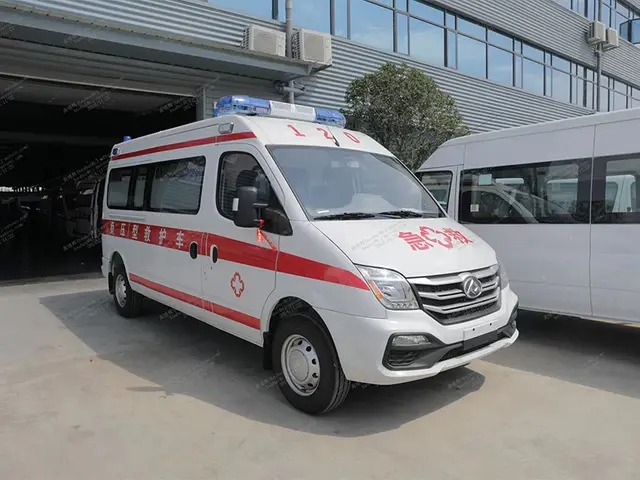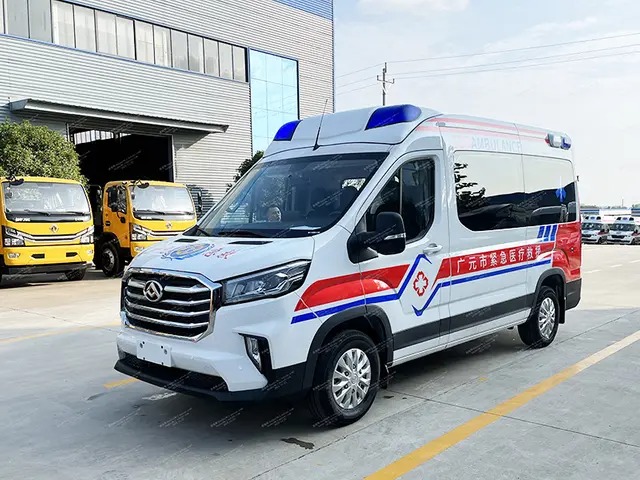


Guide To Ambulance Rescue Training And Simulation Resources
Views: 184 Author: Site Editor Publish Time: 2025-09-19 Origin: Site









Introduction
Emergency medical response is one of the most demanding professions in the world. When a patient’s life depends on fast, accurate, and safe intervention, ambulance rescue teams must be prepared for any scenario—from cardiac arrests in crowded streets to multi-vehicle highway accidents. Effective training and access to reliable simulation resources are crucial to building this readiness.
This guide offers an in-depth look at ambulance rescue training and simulation resources, focusing on how they equip professionals to manage real-world emergencies with confidence. We’ll explore different training approaches, compare simulation tools, and highlight actionable strategies for individuals and organizations who want to strengthen their rescue ambulance capabilities.
Why Ambulance Rescue Training Matters
Ambulance rescue is not just about transporting patients—it’s about delivering immediate, often life-saving medical care in dynamic and unpredictable environments. Proper training ensures that crews can:
React quickly under pressure: Seconds matter, and training helps crews make life-or-death decisions with confidence.
Standardize procedures: From airway management to vehicle extrication, standardized training reduces errors.
Build teamwork: A rescue ambulance team must coordinate seamlessly under chaotic conditions.
Integrate with wider emergency systems: Firefighters, police, and hospitals depend on well-prepared ambulance professionals.
Without robust training and simulations, crews risk delays, miscommunication, and mistakes during emergencies. This section sets the foundation: effective ambulance rescue training isn’t optional—it’s a matter of public safety.

Core Components of Rescue Ambulance Training
A well-designed rescue ambulance training program integrates multiple skill sets. While medical knowledge is the foundation, the following areas are equally vital:
1. Medical Skills Development
Advanced life support (ALS) and basic life support (BLS) certification.
Trauma care and emergency pharmacology.
Pediatric and geriatric emergency considerations.
2. Technical Rescue Skills
Vehicle extrication techniques.
Stabilization and safe patient removal.
Understanding structural risks during rescues.
3. Non-Clinical Competencies
Communication under stress.
Cultural sensitivity during patient care.
Legal and ethical responsibilities of rescue ambulance teams.
Table 1 – Core Competencies of Ambulance Rescue Training
| Competency Area | Example Skills | Outcome for Crews |
|---|---|---|
| Medical Care | Airway management, CPR, IV insertion | Increased survival rates in emergencies |
| Technical Rescue | Vehicle cutting, safe lifts, hazardous environments | Safer extrication and reduced injuries |
| Team Communication | Radio protocols, clear delegation | Faster decision-making, fewer errors |
| Ethics & Safety | Consent, patient rights, protective measures | Reduced legal risks and improved trust |
A strong training foundation covers these areas to ensure crews are prepared beyond just medical treatment.
Simulation-Based Training for Rescue Ambulance Teams
Simulation resources bridge the gap between theory and practice. Instead of only reading manuals, crews immerse themselves in realistic scenarios that mimic emergencies.
High-Fidelity Mannequins
These advanced mannequins replicate breathing, bleeding, and vital sign changes. They allow paramedics to practice invasive procedures without risk to patients.
On-Scene Mock Drills
Full-scale simulations with staged accidents, volunteer patients, and rescue vehicles provide the highest realism. These drills test not only medical skills but also teamwork, logistics, and decision-making under stress.
Simulation-based training transforms knowledge into practical, repeatable skills—making it one of the most valuable resources in ambulance rescue preparedness.
Comparing Rescue Ambulance Training Resources
Organizations often struggle to choose between different training formats. Each has distinct advantages depending on budget, goals, and the target audience.
Table 2 – Comparison of Ambulance Rescue Training Formats
| Training Method | Advantages | Limitations | Best For |
|---|---|---|---|
| Classroom Learning | Structured, scalable, affordable | Lacks realism and stress factors | Foundational theory, certification prep |
| High-Fidelity Sims | Realistic patient interaction, repeatable | Expensive, requires maintenance | Advanced skill practice |
| VR Training | Portable, immersive, safe | High setup cost, tech learning curve | Large organizations, disaster prep |
| Mock Drills | Highest realism, teamwork focus | Logistically heavy, resource-intensive | Integrated system readiness |
The ideal approach is blended learning—combining classroom instruction with both simulation and real-world drills for maximum effectiveness.
Building Effective Ambulance Rescue Training Programs
Designing a successful training program requires more than choosing resources. It’s about structure, evaluation, and continuous improvement.
Steps to Build a Program:
Needs Assessment – Identify specific risks (urban vs. rural, traffic density, natural disasters).
Resource Selection – Match the right training methods with organizational needs.
Scenario Customization – Tailor drills to local realities (e.g., multi-story buildings, highways).
Evaluation Metrics – Use checklists, debrief sessions, and performance analytics to measure success.
Continuous Improvement – Update training as technology, standards, and community needs evolve.
By embedding evaluation and adaptability into programs, organizations ensure their rescue ambulance teams remain prepared for emerging challenges.

Technology-Enhanced Resources for Ambulance Rescue
Advancements in technology are reshaping how ambulance rescue training is delivered.
AI-Driven Training Analytics: Systems track performance, flagging weaknesses for targeted practice.
Mobile Learning Platforms: Apps deliver micro-learning, refresher quizzes, and guidelines for quick updates.
Tele-simulation: Remote instructors guide teams through simulations, bridging geographic gaps.
Wearable Devices: Track stress levels, heart rate, and decision-making under pressure to analyze performance.
These tools not only improve skill acquisition but also allow organizations to scale training efficiently.
International Standards and Certification Resources
Training consistency is essential in rescue ambulance operations, and international standards provide that benchmark.
American Heart Association (AHA) – BLS and ACLS courses.
National Association of Emergency Medical Technicians (NAEMT) – Specialized trauma and rescue training.
European Resuscitation Council (ERC) – Harmonized guidelines for resuscitation practices.
World Health Organization (WHO) – Guidance on emergency preparedness and disaster management.
Standardized certifications ensure cross-border alignment and professional recognition, enabling crews to work effectively in mutual-aid or international disaster scenarios.
Future of Rescue Ambulance Training
The field of ambulance rescue training is evolving rapidly. Key trends include:
Hybrid Learning Models: Blending online modules with on-site simulation.
Data-Driven Personalization: AI tailoring training paths to individual paramedics.
Global Collaboration: Shared databases of best practices, case studies, and open-access simulations.
Sustainability Focus: Eco-friendly simulation tools and reduced reliance on disposable training materials.
Staying ahead of these trends will give organizations a competitive edge in preparedness and response.
Conclusion
Ambulance rescue is one of the most critical pillars of emergency medical systems. By investing in structured training and leveraging advanced simulation resources, organizations ensure their crews can deliver rapid, safe, and effective care when lives are on the line.
FAQ
What is the most effective type of ambulance rescue training?
The most effective programs use blended learning—combining classroom knowledge, simulation tools, and live drills for comprehensive skill development.
How often should rescue ambulance crews undergo refresher training?
At least annually, though high-risk environments may require quarterly drills and continuous micro-learning updates.
Are VR simulations realistic enough for real emergencies?
While they cannot fully replicate physical challenges, VR simulations provide highly immersive scenarios that strengthen decision-making, situational awareness, and teamwork.
What certifications are essential for ambulance rescue professionals?
BLS, ACLS, trauma-focused courses, and standardized certifications from recognized organizations such as AHA, NAEMT, or ERC are essential.
How can smaller ambulance services access advanced simulation resources?
Many organizations partner with regional training centers, share equipment, or use mobile VR platforms to reduce costs while maintaining training quality.






